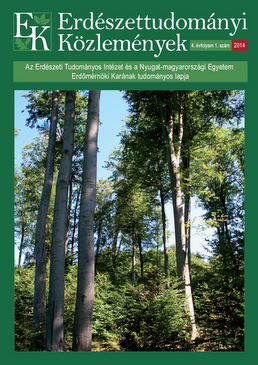The application of TruPulse laser ranger for forestry surveying
Tamás Bazsó, Péter Primusz & Márk Németh
Correspondence
Correspondence: Bazsó Tamás
Postal address: H-9400 Sopron, Bajcsy-Zsilinszky u. 4.
e-mail: tbazso[at]emk.nyme.hu
Abstract
In the last century the Wild T0 compass theodolite was the standard instrument of forest mapping and inventory. Nowadays this instrument is almost disappeared from the forestry surveying. Instead of theodolite we use GNSS instruments, which are easy to use even for not professionals. Data management is much faster with this instrument because of its compatibility with GIS software, but sometimes its accuracy is not so good as in the case of theodolite. In these days we can find digital surveying instruments, which can be operated by simple methods. The accuracy and efficiency of these instruments are suitable for today’s engineers, and the processing of the data can be supported by geoinformatics. We examined the accuracy and effectiveness of the instrument, TruPulse 360B by test measurements. This instrument is a possible alternative of Wild T0, because we also can measure magnetic horizontal angle with it. We estabilished a test field with surveying accuracy for the test measurements, where we can examine many kind of surveying methods. We found that the required accuracy can be achieved applying appropriate measuring mode and processing method. Therefore we can apply this instrument for engineer project.
Keywords: mapping, simple surveying methods, magnetic azimuth
Open Acces
For non-commercial purposes, let others distribute and copy the article, and include in a collective work, as long as they cite the author(s) and the journal, and provided they do not alter or modify the article.
Cite this article as:
Bazsó, T., Primusz, P. & Németh, M. (2014): The application of TruPulse laser ranger for forestry surveying. Bulletin of Forestry Science, 4(1): 147-158. (in Hungarian)
Volume 4, Issue 1
Pages: 147-158
First published:
15 July 2014
More articles
by this authors
6
More articles by this authors in the Bulletin of Forestry Science
